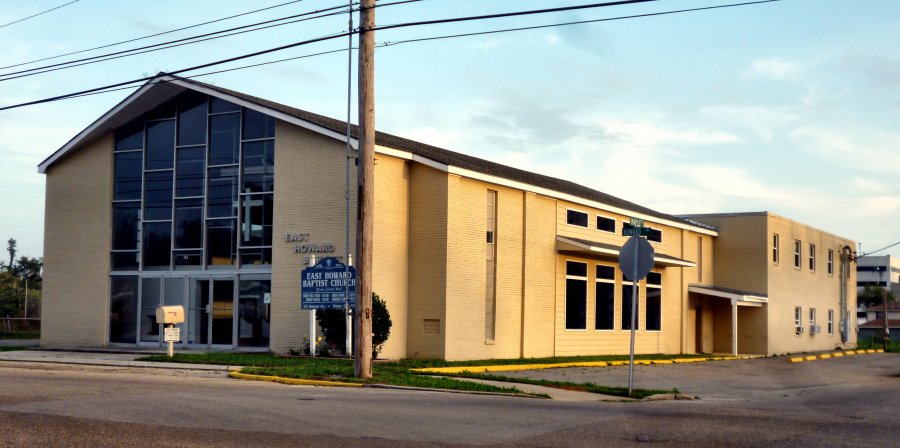TIME LINE
1846
In October, Frederick A. Reynoir and Louise Hugon Renoir (1801-1891) sold for $40 a lot on Reynoir Street to the 1st Baptist Church of Biloxi. Trustees for the church were: Alexander Bookton; C. Taylor; John Herrington; and J.C. Woolworth. The Baptist Church lot had 80-feet on Reynoir Street and ran 88-feet to the west. It was bounded on the north by the L&N Railroad. John C. Bradford acquired this property in July 1885 for $275 and conveyed it to Pauline Trenchard Querens on NOLA in October 1885 for $450. The Biloxi City Park was situated on this lot for many years.(Harrison Co. Mississippi Land Deed Bk. 3, p. 270, Bk. 21, p. 18 and Bk. 21, p. 30)
1853
It appears that Benjamin Holley financed the first Lodge of Biloxi Magnolia Lodge No. 120 AF&AM in 1853 when the building was situated on the NE/C of Washington and Main Street on a lot 66 feet by 80 feet. John Brown was Worshipful Master at this time. He was succeeded by James Fewell in 1854.(Harrison Co., Mississippi Land Deed Bk.6, p. 437 and Bk. 7, p. 136)
1858
Charles W. Whitall (1804-1858), New Jersey native and rector of the Protestant Episcopal Church at Biloxi, died on October 18, 1858).(The Daily Picayune, October 22, 1858, p. 2)
1880
The Methodist Conference selecrted the Reverend Inman Cooper to remain at Biloxi for another year.(The Pascagoula Democrat-Star, January 9, 1880, p. 3)
1885
John C. Bradford acquired the Baptist Church and lot on Reynoir Street opposite the L&N Depot in July 1885 for $275 from C. Taylor, Oscar D. Bowen, George W. Andrews and S.T. Elder, Trustees of the Baptist Church. He conveyed it to Pauline Jeanne Trenchard Querens (1861-1928) on NOLA in October 1885 for $450. The Biloxi City Park was situated on this lot for many years.(Harrison Co. Mississippi Land Deed Bk. 21, p. 18 and Bk. 21, p. 30)
1891
In late December, Robert Selby was appointed pastor of the Methodist Church.[The Biloxi Herald, Decmber 26, 1891, p. 4]
1892
J.J.W. Mathis, pastor of the Baptist churches at Biloxi and Handsboro, has a month's leave of absence and has gone withhis wife to Citronelle, Alabama.(The Biloxi Herald, January 30, 1892, p. 4)
On May 18, 1892, the new Episcopal Church of the Redeemer at Biloxi was consecrated to the memory of the Reverend R.G. Hinsdale by Bishop Thompson of Mississippi and Bishop Sessums of Louisiana. Harry T. Howard donated the land and building.(The Biloxi Herald, May 21, 1892, p. 1)
On July 26, 1892, the great New Orleans philanthropist, John Henry Keller (1830-1908), himself not a Presbyterian, donated Lot 1 (50 feet by 150 feet)-Block 6 of Keller's Tract to the Biloxi Presbyterian Church. The church was located on East Howard Avenue east of the old Biloxi Public High School. W.L. Covel (1836-1926) was contracted to erect the 'small and modest building" of the newly organized congregation. The deacons and elders of the Biloxi Presbyterian Church, among them Bemis O. Bailey (1898-1969), an Ocean Springs native, sold their property to the City of Biloxi in late December 1940, for $3659. The new Central Junior High School was built on here on East Howard Avenue.(Harrison Co., Ms. Land Deed Bk. 28, p. 205 and Deed Bk, 237, p. 124) and he Biloxi Herald, July 2, 1892, p. 1 and July 16, 1892, p. 4)
1896
The Reverend H.M. Crain came to Biloxi in February to be pastor of the 1st Baptist Church and also to minister to the Baptist faithful at Ocean Springs. He and Mrs. Crain were domiciled in one of the Cooper Cottages on Reynoir Stret near Front Street.(The Biloxi Herald, March 7, 1896, p. 8)
1897
1899
Reverend C.F. Emery of the Methodist Church left Biloxi on January 12th for his new assignment at Edwards, Mississippi.(The Biloxi Daily Herald, January 8, 1899, p. 8 and January 13, 1899, p. 8)
In December 1899, Dr. J.B. Searcy, field editor of The Baptist which he has been employed for several months, has accepted the position of pastor of the 1st Baptist Church of Biloxi. The Baptist resulted from the consolidation of The Baptist Record of Meridian and The Baptist Layman of Winona.(The Biloxi Daily Herald, December 5, 1899, p. 8)
1901
The new Baptist Church is being built by Thompson & Eistetter, architects and builders. The Reverend Dr. Searcy is in residence.[editor note: This structure was on Lameuse Street and Washington Street.(The Biloxi Daily Herald, January 6, 1901, p. 8)
1904
In May, W.K.M. Dukate gave Methodist minister, H.W. Van Hook, $1000 for the new church building fund.(The Biloxi Herald, May 20, 1904, p. 6)
H.T. Howard, past Grand Master, installed Charles Redding as Worshipful Master of Magnolia Lodge No. 120 AF&AM in late December.(The Biloxi Daily Herald, Decemebr 19, 1903, p. 6)
1905
from The Biloxi Daily Herald, October 30, 1905, p. 4.

1906
The Reverend J.B. Searcy (1838-1900+), a native of Alabama and pastor of the 1st Baptist Church, left Biloxi for Little Rock, Arkansas on January 6th. The Reverend H.C. Roberts of Eureka Springs, Arkansas wil replace him.(The Biloxi Daily Herald, January 6, 1906, p. 4 and 1900 Harrison Co., Mississippi Federal Census T623_808, p. 7B, ED 30)
1908
Pastor Henry C. Roberts (1853-1910+), native of Kentucky, left Biloxi on January 2nd after two years at the 1st Baptist Church on Washington and Main Street. During his tenure here of constant and faithful service, the church became debt free and had a net gain of fifty members. Reverend Roberts relocated to Silver Creek, Lawrence County, Mississippi.(The Daily Herald, January 2, 1908, p. 1 and 1910 Lawrence Co., Mississippi Federal Census T624_747, p. 5B, ED 99)
The Reverend David Warren Bosdell [1871-1928] came to the 1st Baptist Church at Biloxi from Memphis, Tennessee in late September to replace Reverend Roberts. He had married Anne E. Gurganus [1876-1940] at Mobile, Alabama in 1897.[The Biloxi Herald, September 25, 1908, p. 4]
1909
Reverend William Megginson (1869-1954) and Amy Allen Megginson (1871-1953), his spouse, came to Biloxi from Edna, Texas in March and began his duties as pastor of the Biloxi Presbyterian Church on April 1st. He was officially recognized as pastor of the church on May 4, 1909. The Reverend Megginson lived at 1716 West Beach.(The Daily Herald, March 20, 1909, p. 8 and May 3, 1909, p. 4)
Reverend William A. Roper (1868-1910+), native of Alabama, who replaced Henry C. Roberts at the 1st Baptist Church, departed Biloxi for Kosciusko, Attala County, Mississippi in April 1909. He was offered an annual salary of $1500 to relocate.(The Daily Herald, April 5, 1909, p. 4 and 1910 Attala County, Mississippi T624_732, p. 26A, ED 3)
The Christian Science Society of Biloxi plans to erect a church on the corner of Howard and Seal Avenues. A chapel will be put up for temporry use of the society. Contractor W.T. Powell has completed the foundation from plans drawn by A.C. Voak, a local man. The church will be an attractive, bungalow-style, frame structure.(The Biloxi Daily Herald, May 14, 1909, p. 8)
In May, the First Baptist Church of Biloxi selected the Reverend James Jesse Smylie (1865-1950) of Florence, Mississippi as their new Pastor . Reverend Smylie's tenure at Biloxi was short as he resigned his post in mid-September 1909. Biloxi was his first pastorate and Smylie had been a Methodist before becoming a Baptist. Leaving Biloxi he went to Kentucky, Tennessee and Louisiana doing evangelistic work. In December 1909, the Reverend J.J. Smylie accepted the Baptist pastorate at Mansfield, Louisiana. The Reverend Smylie and his spouse, Libbie K. Symlie (1868-1937) were the parents of at least eight children. They and several of their children are buried in the Rose Hill Cemetery at Meridian, Lauderdale County, Mississippi.(The Biloxi Daily Herald, May 17, 1909, p. 4, September 13, 1909, p. 2 and December 10, 1909, p. 8 and 1910 Desoto Parish, Louisiana Federal Census T624_512, p. 8A, ED 69)
1910
The Lutheran community of Biloxi met in the Presbyterian Church and were led by Martin Haas, president, F. Greve, treasurer, and Miss Gertrude Ott, secretary. They were planning to erect a $3000 church building an acquire a lot. The Reverend George Schlisser of Pascagoula was to be the pastor of the Biloxi Lutheran Church.(The Daily Herald, December 28, 1910, p. 1)
F.W. Williams, itenerant, Negro, 'Apostolic' preacher, returned to Biloxi for the third time. He planned to preach at the Colored Methodist Church on Main Street near the L&N RR. He was run out of time the first time for allowing Whites to enter his tent near Division Street. On another occasion, Reverend Williams was asked to leave when Biloxi police discovered a woman lying prostrate on the floor of a small building surrounded by religionists of his mysterious faith. She had been there for almost 24 hours 'under the power of God'. Williams has travelled throughout Alabama and Mississipppio and as far as Memphis. He wears a smile that is guaranteed not to fade.(The Daily Herald, December 29, 1910, p. 1)
1913
Pastor D.W. Bosdell resigned his position at the 1st Baptist Church effective 31 December 1913. He elected to go to Lucedale, George County, Mississippi where a new church was to be erected.[The Daily Herald, October 6, 1913, p. 1 and December 22, 1913, p. 4]
1915
In late June, the First Evangelical Lutheran Church congregation meeting in the First Baptist Church of Biloxiawarded a $2500 contract to Harry Haise and Eric Johansen to erect a Bungalow style chapel [28 feet by 47 feet] at Jackson and Thomas Streets. The completed chapel valued at $3500 was dedicated on September 26, 1915. The Reverend E.C.Brink of Illinois came to Biloxi in 1914 to take charge of the newly developing congregation, which had about 35 members at this time.(The Daily Herald, July 2, 1915, p. 2 and September 27, 1915, p. 1)
1917
Reverend Byron Holley (1851-1939), native of New York, came to the Episcopal Church of the Redeemer at Biloxi in June 1917. He had been rector of the Grace Church and St. George's Episcopal Church in New Orleans. Dr. Holley would be named president of the Biiloxi Hospital Association in February 1919 and work actively at church missions in Ocean Springs and on Point Cadet in Biloxi. He and his spouse, Elizabeth Sanborn Knapp, left Biloxi in March 1921 for Napa, California.(The Daily Herald, June 14, 1921, p. 3 and March 28, 1921, p. 1)
1921
On November 3rd, E.C. Gay conveyed a large lot on the southside of West Howard Avenue with 82 feet on West Howard and running south 629 feet to an alley, the extension of Jackson Street, to J.W. Elder, Lyman Bradford, and N.V.Boddie, Trustees of the 1st Baptist Church. The consideration was $2800. Julius M. Lopez had sold the lot to E.C. Gay on October 28, 1921.(Harrison Co., Mississippi Chancery Court Deed Bk. 132, p. 575)
1922
The Reverend H.F. Tolle, formerly at the Main Street Methodist Church is ill in Jackson. He still has a large cottage at the Seashore Campground.(The Daily Herald, June 12, 1922, p. 3)
The 1st Evangelical Lutheran Church on Jackson and Thomas Streets dedicated its new altar and pulpit. The Reverend George Hoffman was assited by Bishop L. Schweickhardt of New Orleans.(The Daily Herald, June 12, 1922, p. 3)
1923
In November, the finance committee of the 1st Baptist Church of Biloxi began planning to raise money for their proposed $50,000 santuary on West Howard Avenue. James E. Greene of Birmingham, Alabama was selected as their architect.(The Daily Herald, November 17, 1923, p. 1)
1928
The Reverend S.W. Noles, newly elected pastor of the Oak Street Assembly of God Church, assumed his duties in August. Other church officers elected were: Deacons-L.D. Wells, J.M. Jalanivich, and A. Caldwell; Tony Feldman, sec.; and J.M. Jalanovich, treas. Trustees-L.E. Kinsey, Joseph Cox, and F.C. Weaver.(The Daily Herald, August 4, 1928, p. 2)
1930
Reverend J.W. Holloway, the brother of Reverend D.P. Holloway, also known at Biloxi, has assumed duties as pastor at the Oak Street Assembly of God Church. he succeeds the Reverend W.M. Stevens who left to take charge of the church at Stonewall [Lorraine]. Reverend Holloway came here from McComb where he had been the pastor last year. Priorly he was at Laurel's Assembly of God Church for three years.(The Daily Hwerald, August 25, 1930, p. 2)
Reverend O. Nussmann, pastor of the First Evangelical Lutheran Church, will speak at the Rotary Club on his experiences in India.(The Dasily Herald, September 29, 1930, p. 2)
1931
In June, the Reverend G.C. Hodge of Jackson replaced the Reverend Lewis Harrison Miller (1888-1949) as pastor of the 1st Baptist Church. Reverend Miller, a native of Macon, County, North Carolina, was relocating to New York. By 1940, he and his family were at Chick Springs, South Carolina. His son, Lewis H. Miller Jr. (1919-2008), also became a Baptist minister and USAF chaplain. Claude P. Jones was pastor at the Main Street Methodist Church at this time.(The Daily Herald, June 1, 1931, p. 2)
1938
First Evangelical Lutheran Church will celebrate its 25th anniversary of its Biloxi organization next Sunday. In 1915, the church building at Thomas and Jackson Street was dedicated. In 1921, under the leadership of Reverend George Hoffman, the work of the church was expanded to include activities of a Back Bay mission with chapels at Chartres [Bayview Avenue] and Oak Street. Resident pastors who have served the congregation in its history were: Reverend Paul Wobus; Reverend E.C. Brink; Reverend H.W. Hosto; Reverend George Hoffman; Reverend R. Gruenke; Reverend E. Arndt; Reverend O. Nussmann; Reverend F.J. Mehrtens; and the present pastor, the Reverend T.H. Van Dyck.(The Daily Herald, November 9, 1938, p. 5)
1939
Reverend Byron Holley Jr.,(1851-1939), native of Rochester, New York and Rector of the Episcopal Church of the Redeemer at Biloxi from June 1917 to March 1921 died on May 2, 1939 at Burbank, California. He was preceded in death by Fannie Estelle Campbell (1853-1905), his first spouse. Dr. Holley was survivied by Elizabeth Sanborn Knapp, his second wife; his son, Robert Campbell Holley of Hardwick, Georgia, and daughter, Lucille Holley Wilson, wife of Robert H. Wilson.(The Times-Picayune, May 12, 1939, p. 2)
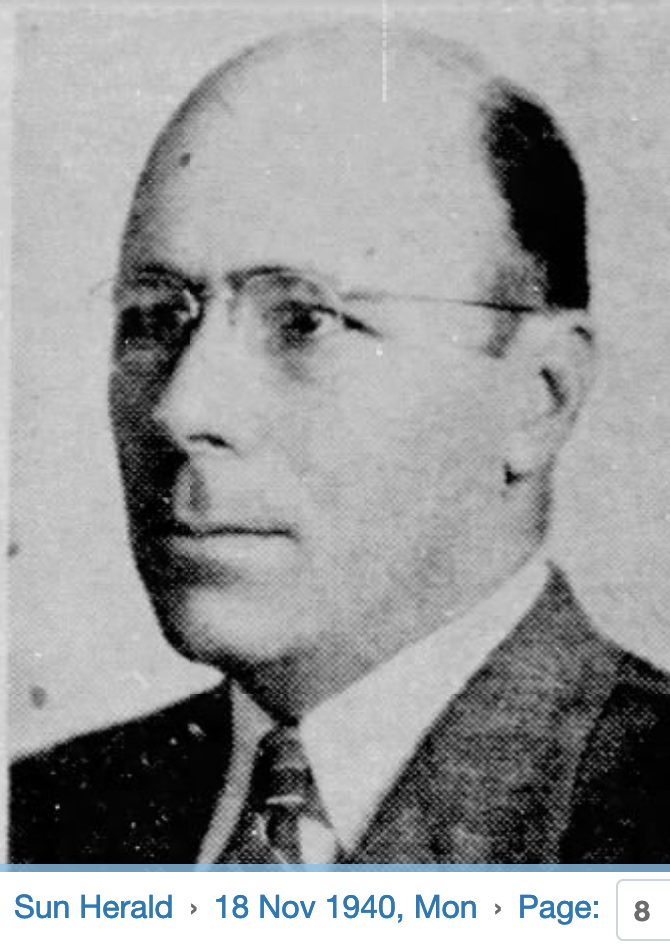
Reverend Clyde H. Gunn (1902-1980) who came to Biloxi's Main Street Methodist Church in 1938 from Morton, Scott County, Mississippi was reassigned to Biloxi for another year.(The Daily Herald, November 20, 1939, p. 3)
1941
In March, the First Presbyterian Church under the leadership of the Reverend R.O. Flynn moved its little white church through the streets of Biloxi from the 500 block of East Howard Avenue a distance of about 1 2/3 miles to the corner of West Howard Avenue and Hopkins Boulevard.(The Daily Herald, March 21, 1941, p. 1 and April 18, 1941, p. 6 with image)
Reverend Henry reported that the foundation for the Pass Road Tabernacle Church was almost finished and that donations to erect the church continue to be received.(The Daily Herald, April 12, 1941, p. 7)
1944
The local Church of the Nazarene at Biloxi was founded in 1944.(The Daily Herald, October 9, 1948, p. 2)
Reverend Thomas A. Carruth appointed pastor of the Main Street Methodist Church.(The Daily Herald, October 21, 1946, p. 1)
1945
1946
The East End Methodist Church acquired a lot on East Howard Avenue. The Reverend A.M. Ellison is working with the East End Church. Police Chief Laz Quave recently joined the church and is taking an active interest in church work. The Methodists in Biloxi are raising funds to erect two new churches.(The Daily Herald, February 25, 1946, p. 7)
In October, the $8000, Church of Christ on Keller Place was under construction by Contractor J.P. Starks.(The Daily Herald, October 15, 1946, p. 5)
Reverend Thomas A Carruth of the Main Street Methodist Church was joined by Thomas McCurlery as his associate pastor in October.(The Daily Herald, October 24, 1946, p. 7)
1947
The Church of Christ moved into its new building at 212 Keller Place in early March. The 1500 square-foot, structure was built with concrete blocks, concrete floors, asbestos roofing and sheet rock ceiling by J.P. Starks for $9000. The auditorium seats 240 congregants. There were two Sunday School classrooms and a 40 square-foot, baptistry with pool. A.T. Russell, C.C. Lee and Robert E. Lee are trustees of the church and services have been held in the City Hall for the past four years.(The Daily Herald, February 27, 1947, p. 10)
Reverend Lachlan C.Vass (b. 1872), supply pastor of the First Presbyterian Church of Biloxi for the past five years, retired to make his home at Decatur, Georgia.(The Daily Herald, May 24, 1947, p. 2)
Joel F. Winkler (1923-1989), native of Anderson, Indiana, who had been pastor of the Pass Road Gospel Tabernacle of the Christian and Missionary Alliance since June 17, 1945 was ordained for the ministry at Tampa, Florida at the annual conference held from September 30 to October 3, 1947. In May 1945, Joel had completed the three year course at the Missionary Training Institute at Nyack, New York. He died on June 21, 1989 at Kingman, Arizona.(The Daily Herald, October 14, 1947, p. 5)
1948
Dr. B.Z. Welch, chairman of the Main Street Methodist Church building committee, announced plans for a new sanctuary on Hopkins Boulevard. Carl Matthes was named architect.(The Daily Herald, March 1, 1948, p. 2)
On October 10th, the Church of the Nazarene of Biloxi under the leadership of Reverend E.J. Miller, joined a churchwide celebration of the 40th anniversary of the organization of the Church of the Nazarene as a Protestant denomination.(The Daily Herald, October 9, 1948, p. 2)
The Reverend Maynard Michael Miller assumed his duties as pastor of Biloxi's Presbyterian Church.(The Daily Herald, November 27, 1948, p. 6)
1949
The Reverend James Thomas Leggett (1865-1949), pioneer Methodist minister, died on June 24, 1949. His internment was in the Highlands Cemetery at Hattiesburg, Mississippi.
1950
In March 1950. John T. Collins was taking bids to erect the Back Bay Evangelical and Reform Mission Building at Chartres [Bayview Avenue] and Fayard Street. The 5000 square-ft., wood-framed, asbestos siding structure was to cost about $25,000. The building was to have three assembly rooms [35 feet by 30 feet] separated by folding patitions; three classrooms; kitchen; bedroom; and toilet facilities. The Reverend Victor T. Kissell, pastor, was in charge of the mission.(The Daily Herald, March 29, 1950, p. 9)
1951
The Reverend Grover Cleveland Hodge (1892-1980) celebrated his 20th year with the 1st Baptist Church of Biloxi in early June. When Dr. Hodge came to Biloxi in 1931, the church had 464 members and a Sunday School enrollment of 258 students, In 1951, these numbers were 1220 congregants and 768 Sunday School attendees. G.C. Hodge was presented with a Lord Elgin wrist watch by L.H. Williams. Alma Hodge Rose, his daughter and spouse of John Rose, and Pamela King Rose, his granddaughter, all of Chattanooga, Tennessee, attended the fete.(The Daily Herald, June 2, 1951, p. 6 and June 4, 1951, p. 2)
Ground was broken in early June for a Baptist mission at Fernwood on Pass Road. The new building was called the Bowen Memorial Baptist Chapel and the first congregation was organized by the Reverend W.E. Bowen and the Reverend F.S. Dodge circa 1916. Lt.-Colonel Richard L. Alexander had been pastor of the mission church since 1948. Shrouds-Mogabgab of Gulfport were architects for the concrete and stucco structure with a 150 person seating capacity.(The Daily Herald, June 9, 1951, p. 8 and November 10, 1951, p. 12)
The 1st Methodist Church will have Homecoming Day on Sunday.(The Daily Herald, June 9, 1951, p. 8)
1952
On January 20th, the West Biloxi Baptist Church held its first service in its educational building situated on the corner of Camellia and Southern Avenues in the Greater Biloxi Subdivision. For the past four months, the congregation had met in the homes of Robert McDaniels and Corey Ashcraft, superintendent. The Reverend J. Hoffman Harris, assistant pastor fo the First Baptist Church of Biloxi, is serving as pastor.(The Daily Herald, January 19, 1952, p. 6)
Emmanuel Baptist Church on Rodenberg Avenue began as a mission of the Handsboro Baptist Church in 1952. First services held in a house purchased there in August 1952. Parishoners petitioned to become the Emmanuel Baptist Church with 34 members in November 1953. Built a two-story education building and the present day [2014] sanctuary was completed in 1957.(The Sun Herald, December 6, 2014, p. B-7)
Dr. W.A. Tyson, native of Georgia, arrived at Biloxi in late June to become pastor of the First Methodist Church of Biloxi. He and Mrs. Tyson came from Vicksburg to take up residence in the Methodist parsonage on Seal Avenue.(The Daily Herald, June 21, 1952, p. 2)
1954
On July 25th, Epworth Methodist Church laid the cornerstone for its new church on the NW/C of Walker and Davis Streets in Biloxi's Back Bay section. Mrs. Ben Garlotte placed the mortar on the footings. Others in attendance were: Reverend Eugene Dyess; Paul Balius; Lloyd Bonnett; Charles Higginbotham; and C.E. Mims.
The Epworth Methodist Church and Moore Community House were founded in 1925 by the Reverend W.W. Moore.(The Daily Herald, July 28, 1954, p. 16)
1955
Dr. Grover C. Hodge retired from his twenty-four year ministry at the 1st Baptist Church of Biloxi in May 1955.(The Daily Herald, May 5, 1955, p. 1)
1958
The J.T. Leggett Memorial Methodist Church, named for the Reverend James Thomas Leggett (1865-1949), at the Methodist Seashore Assembly Grounds on West Beach Biloxi was dedicated on January 26, 1958. It was erected on the former site of the another Methodist tabernacle. The church could seat 300 worshipers and and served also as a meeting place for conference wide activities including the annual pastor's school and the school missions of the WSCS. The sanctaury was designed by Claude Lindley of Ocean Springs and built by M.J. Lang Construction Company. The first pastor was the reverend Jerry Furr (b. 1929), native of Pascagoula and the husband of Marlene Byrd.(The Daily Herald, January 25, 1959, p. 3)
1959
The $60,000 East Howard Avenue Baptist Church on East Howard Avenue and Maple Street was dedicated on November 29th. The brick and glass, structure was 86 feet deep and 48 feet wide with a seating capacity of about 500 people including the balcony area. The Reverend Leo C. Hoff (1913-2009), a native of Brookhaven, Lincoln County, Mississippi, had come to this Biloxi church 2 1/2 years ago from the Bunker Hill Baptist Church near Columbia, Mississippi. The Reverend Hoff expired at Norwood, Lincoln County, Mississippi on April 17, 2009.(The Daily Herald, November 28, 1959, p. 6)
1964
Fred Ferraez, native of New Orleans and Fortier High School graduate, was named pastor of the Nazarene Church at Biloxi. Reverend Ferraez received his religious training a the Bethany Nazarene College at Bethany, Oklahoma. He had married Frances Pazaris (1929-2013) and they were the parents of 5 children.(The Daily Herald, December 10, 1964, p. 12)
1966
In March, Reverend Larry G. Rohrman (1938-2005), pastor of the Temple Baptist Church at Tuscaloosa, Alabama, accepted the head ministry of the 1st Baptist Church of Biloxi. Reverend Rohrman was born in south Texas and had attended Baylor University and the New Orleans Baptist Seminary. His marriage to Sonya O'Neal, a Hattiesburg, Mississippi native and Baylor University graduate, had given life to Michael Scott Rohrman and Cindy Lea Rohrman. The family expected to be in Biloxi by April 10th. Reverend Rohrman's prior religious duties had taken him to Val Verde, Texas and Hattiesburg, Mississippi. Larry G. Rohrman is believed to have passed on June 24, 2005 at Blountsville, Alabama.(The Daily Herald, March 17, 1966, p. 1)
1973
The Reverend Ernest Sylvester Flynt (1981-1973), native of Mt. Olive, Mississippi and a retired Baptist minister, died at Biloxi on October 13, 1973. His 60 years of Christian service had brought him to pastorates at Kentucky, Indiana and Mississippi. On the Coast, E.S. Flynt had served 15 years as pastor of the Handsboro Baptist Church; 14 years as pastor of the East Howard Avenue Baptist Church; and for 7 years at the West Gulfport Baptist Church. He was also responsible for organizing several churches on the Coast with the last two at Woolmarket and West Gulfport. Reverend Flynt was survivied by Elizabeth J. Richardson Flynt (1892-1975), his wife, at Biloxi, and two daughters, Earline F. Bergin of Ocean Springs and Ernestine F. Sumrall of Handsboro. The corporal remains of the Reverend Flynt and Mrs. Flynt were in the Floral Hills Cemetery at Gulfport, Mississippi.(The Daily Herald, Ocotber 14, 1973, p. 2)
1980
Reverend Glover Cleveland Hodge Sr. (1892-1980) died at Biloxi on November 7, 1980. He was pastor of the First Baptist Church of Biloxi from 1931 to early May 1955. Alma Simmons Hodge (1896-1995), his spouse, expired in late June 1995. Both internments were in Southern Memorial Park cemetery at Biloxi, Mississippi.(The Daily herald, May 5, 1955, p. 1; November 9, 19080, p. A-4; and June 29, 1995, p. C-2).
1999
On October 14th, Beau Rivage Resorts, Inc. acquired the 1st Baptist Church of Biloxi sanctuary and lot on West Howard Avenue. T.C. Waller was chairman of the 1st Baptist Church deacons at this time.(Harrison Co., Mississippi Chancery Court 2nd JD Land Deed Bk. 347, p. 6)
__________________________________________________________________________________________________
CHURCH HISTORIES and CULTS
.jpg)
BROTHER ISAIAH
Brother Isaiah (1847-1934) was born John Cudney in Ontario Province, Canada
Possibly no other event in the history of this region, other than the founding of Gulf Hills in 1925, has left an indelible mark on the settlers along the placid waters of Bayou Puerto and the Back Bay of Biloxi, than the arrival of Brother Isaiah in June 1922. With the assistance of Martin Fountain Jr. (1882-1963) and his son, Wallace Fountain (1903-1958), Brother Isaiah came to the Mississippi Gulf Coast with his entourage from New Orleans. After arriving at the Biloxi harbor with his “fleet” of seven vessels, which included houseboats, Brother Isaiah and followers, settled on high ground near the mouth of Bayou Puerto, a small, estuarine stream situated west of Gulf Hills, a newly developing, resort community. Here they lived in tents and houses. Isaiah's group consisted of about twenty-five people. They dressed in the fashion of the time, but the men wore long hair and grew heavy beards. Women of the cult wore no facial enhancement. The sexes lived separately.(The Daily Herald, June 10, 1922, p. 3 and June 24, 1922, p. 1)
Isaiah’s disciples tilled the land, primarily growing vegetables, for their livelihood, while Brother Isaiah preached and practiced his art of healing. Brother Isaiah drove a limousine. It was a Hudson Super Six purchased in 1922, at New Orleans by a man who had followed Brother Isaiah from California. The anonymous donor claimed that a life-long intestinal ailment had permanently disappeared after he received a handkerchief touched by the hands of Brother Isaiah.(The Times Picayune, January 25, 1922, p. 1)
The Albert E. Lee (1874-1936), the editor of The Jackson County Times related the following on July 1, 1922, p. 5: "Brother Isaiah" continues to attract hundreds of visitors to his camp on Back Bay, many of whom go to him to be healed of their mental and bodily afflictions. There is a conflict of opinion as to the ability of Brother Isaiah as a healer. Some say he performs miracles and some say he is just an ignorant old man with a deluded idea that he is endowed with supernatural power. The editor of the Times has not visited the camp nor attended any of the meetings being held by Isaiah.”
Also in early July 1922, The Daily Herald reported that: “Ocean Springs people still continue to visit Brother Isaiah nightly. Some for treatment others to witness meetings.”(The Daily Herald, July 8, 1922, p. 2)
In late November 1923, Brother Isaiah returned to North Biloxi after a visit to the northwest. At Kirkland, Washington, he had conducted meetings. The local colony at this time, numbered some seventy-five souls that tilled the soil and assisted Brother Isaiah in his daily affairs.(The Times-Picayune, November 26, 1923, p. 6)
Texas
In early October 1922, Brother Isaiah left his St. Martin retreat to visit Beaumont, Texas. He planned to treat a lady patient there. Members of his cult have been traveling to and fro Lumberton and other venues in south Mississippi. Those who remain in the camp at St. Martin are farming.(The Daily Herald, October 10, 1922)
John Cudney
Brother Isaiah (1847-1934) was born John Cudney in Ontario Province, Canada near Niagara Falls, New York, he believed that he was the 88th reincarnation of the Prophet Isaiah. Brother Isaiah with his mother and sister, Amanda Coldberg (1843-1920+), landed at New Orleans circa 1916. Here they subsided on a houseboat moored to the Mississippi River levee near Audubon Park. In a few years, Brother Isaiah was drawing thousands to the batture to hear his sermons and be "cured" by the "miracle man", as he became known.(The Oroville Mercury-Register, February 23, 1985)
In September 1857, Amanda Cudney and John Cudney with Abel Cudney (1850-1900+) and Caroline Cudney (1842-1857+), their other siblings, were living in the household of Charles Rosel (1830-1857+), a farmer, domiciled in Filmore County, Minnesota Territory. This census gave Michigan as the birth place for the Cudney children.(September 1857 Minnesota Territory 1849-1905 Census, Roll MN 1857.2-Line 3)
The peripatetic Brother Isaiah had "colonies" at various places in the United States. Between 1922 and his demise in July 1934, the Cudney Cult had lived or visited in California, Washington, Mississippi, Louisiana, Texas, and Florida. His short tenure on the Mississippi coast was in western Jackson County, primarily in the area today, which is called St. Martin. Here Cudney and his faithful lived in tents and houses off of LeMoyne Boulevard in the vicinity of Bayou Puerto and on the Rose-Money Farm north of Ocean Springs where he preached and cured the afflicted.
As part of his legacy, John Cudney left a book, The City of New Jerusalem. It was published at Los Angeles, in March 1932. The 900+ page volume contains more than 600 pages of sermons. Many of these were delivered at Fort Meyers, Florida. The work also contains 110 pages of testimonials and many letters.(The Oroville Mercury- Register, February 23, 1985)
Death
John Cudney passed in late July 1934, near Oroville, California. Unlike the followers of Jesus who waited at the tomb and witnessed his Resurrection on Easter Sunday, there is no miracle here. Dejectedly, the disciples of the dead man, Brother Isaiah, placed his remains in the earth completing the cycle as told by St. Paul, "man dust thou art and dust thou shall return".(The Jackson County Times, July 28, 1937, p. 2)
The return
In April 1937, The Daily Herald reported that "The Camp of the Saints" has located on the M.R. Davis place on the Meunier property in North Biloxi. The followers of the late Brother Isaiah (1847-1934), which numbered about twelve and were primarily men, decided that the Biloxi area was an ideal location. They were seeking a large farm to share crop. The disciples of Brother Isaiah believed in making their livelihood from agriculture, not from donations. They did not plan to practice any form of healing like their deceased leader. The religious cult had disbanded in 1936, in northern California. The 'Saints' left Biloxi in 1925 for Fort Meyers, Florida before relocating to Raceland, Louisiana circa 1929. Their journey had ended in Oroville, California.(The Daily Herald, April 20, 1937, p. 10)
There are many octogenarians in this area who were taken to the tent of Brother Isaiah by their parents. Children and grandchildren of these people might inquire of them and get their own vicarious vision of Brother Isaiah.
REFERENCES:
John M. Fletcher, The American Journal of Psychology, The Miracle Man of New Orleans, Vol. 33, No. 1 (Jan., 1922), pp. 113-120.
Journals
The Daily Herald, “Brother Isaiah Arrives”, June 10, 1922.
The Daily Herald, “Brother Isaiah works ‘miracles’ in Jackson County with Colony”, June 24, 1922.
The Daily Herald, “Brother Isaiah goes to Texas”, October 10, 1922.
The Daily Herald, “Brother Isaiah in California”, August 8, 1929.
The Daily Herald, “Brother Isaiah’s followers return”, April 20, 1937.
The Jackson County Times, “Local and Personal”, July 1, 1922.
The Jackson County Times, “Local and Personal”, September 16, 1922.
The Jackson County Times, “Brother Isaiah is touring the States”, September 16, 1922.
The Jackson County Times, Death occurs in Isaiah’s tent”, November 24, 1923.
The Jackson County Times, “Brother Isaiah en route to Biloxi”, August 30, 1924.
The Jackson County Times, “Local and Personal”, April 4, 1925.
The Jackson County Times, “Faith works wonders”, October 29, 1927.
The Jackson County Times, “Isaiah dies”, July 28, 1934.
The Jackson County Times, “Brother Isaiah dies in California”, July 28, 1934.
Jambalaya-The Crescent City-Coast Connection, "Once Upon a Time-The Miracle Man: Brother Isaiah (1847-1934)", April 1998.
The Times Picayune, "Strange faith cures laid at door of tiny houseboat",March 11, 1920, p. 1.
The Times Picayune, "Blind hope, aroused to passion, forces army of lame, weak, and sick to healing of new 'Isaiah'", March 12, 1920, p. 1.
The Times Picayune, "Disbelief creeps in to discount triumph of 'cures' by healer", March 13, 1920, p. 1.
The Times Picayune, "Police declare 'hands off' for Brother Isaiah", March 13, 1920, p. 4.
The Times Picayune, "Healer's declined funds are sought", March 13, 1920, p. 4.
The Times Picayune, "Wars of bloodshed decried and those of righteousness extolled by 'Brother Isaiah'", March 15, 1920, p. 1.
The Times Picayune, "Aged 'Healer' spends Monday in Pujol home", March 16, 1920, p. 1.
The Times Picayune, "Patrolman says 'Brother Isaiah' gave him relief",March 16, 1920, p. 2.
The Times Picayune, "Blind workers desert shop and rush to 'Brother Isaiah'", March 17, 1920, p. 1.
The Times Picayune, "Biloxi Kiwanians fight proposed river spillway",November 26, 1923, p. 6.
The Oroville, California Mercury- Register, "Brother Isaiah founded 'New Jerusalem' here", February 23, 1985.
____________________________________________________________________________________________
241 Howard Avenue [image made March 2012]
EAST HOWARD AVENUE BAPTIST CHURCH
241 Howard Avenue
1959-DEDICATION
The $60,000 East Howard Avenue Baptist Church on East Howard Avenue and Maple Street was dedicated on November 29, 1959. The brick and glass, structure was 86 feet deep and 48 feet wide with a seating capacity of about 500 people including the balcony area. The Reverend Leo C. Hoff (1913-2009), a native of Brookhaven, Lincoln County, Mississippi, had come to this Biloxi church 2 1/2 years ago from the Bunker Hill Baptist Church near Columbia, Mississippi. The Reverend Hoff expired at Norwood, Lincoln County, Mississippi on April 17, 2009.(The Daily Herald, November 28, 1959, p. 6)
POST-KATRINA
In August 2011, the sixty, more or less congregants of the East Howard Baptist Church, a member of the Gulf Coast Baptist Association, were greeted by Tom Mims, their new minister, and Tommy Mims, his son, as their music director. Christen Cauley was children's worship director. Devasted by Hurricane Katrina because of its low elevation on the southeast corner of Howard Avenue and Maple Street on Biloxi's Point Cadet, the church suffered a loss of participation as former residents of the area relocated to other areas. In addition to his pastoral obligations, Tom Mims is the director of the Gulf Coast Rescue Mission at Biloxi.(The Sun Herald, March 11, 2012, p. A9)
REFERENCES:
The Daily Herald, "East Howard Avenue Baptist", November 28, 1959.
The Sun Herald, "East Howard Baptist Church feels the work of Holy Spirit", March 10, 2012, p. A9.
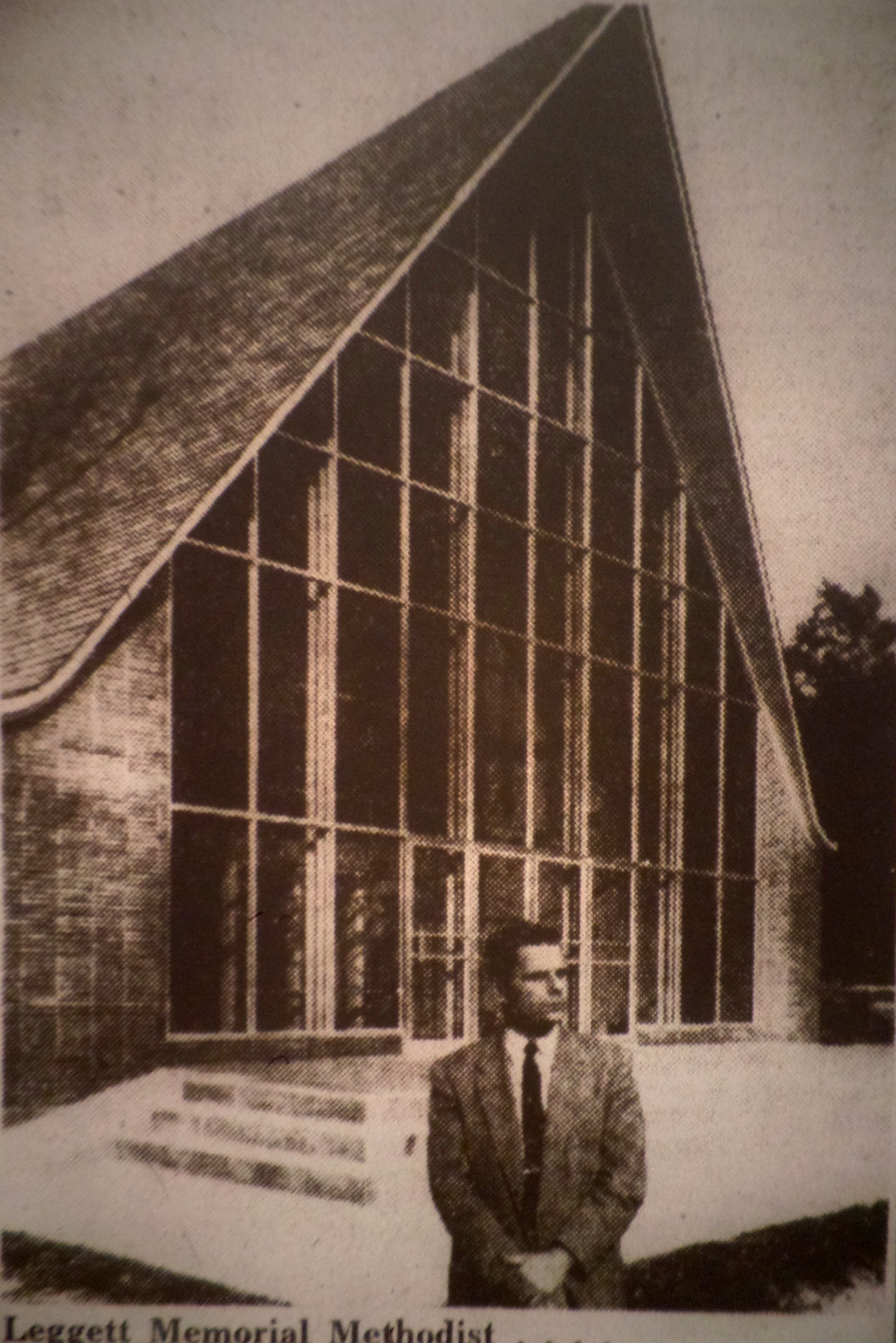

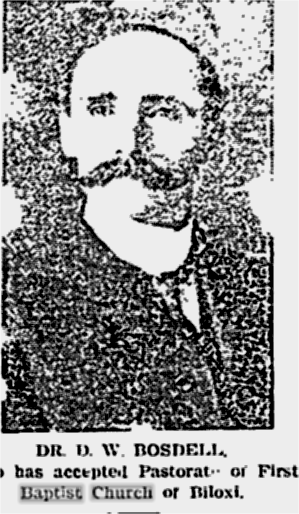

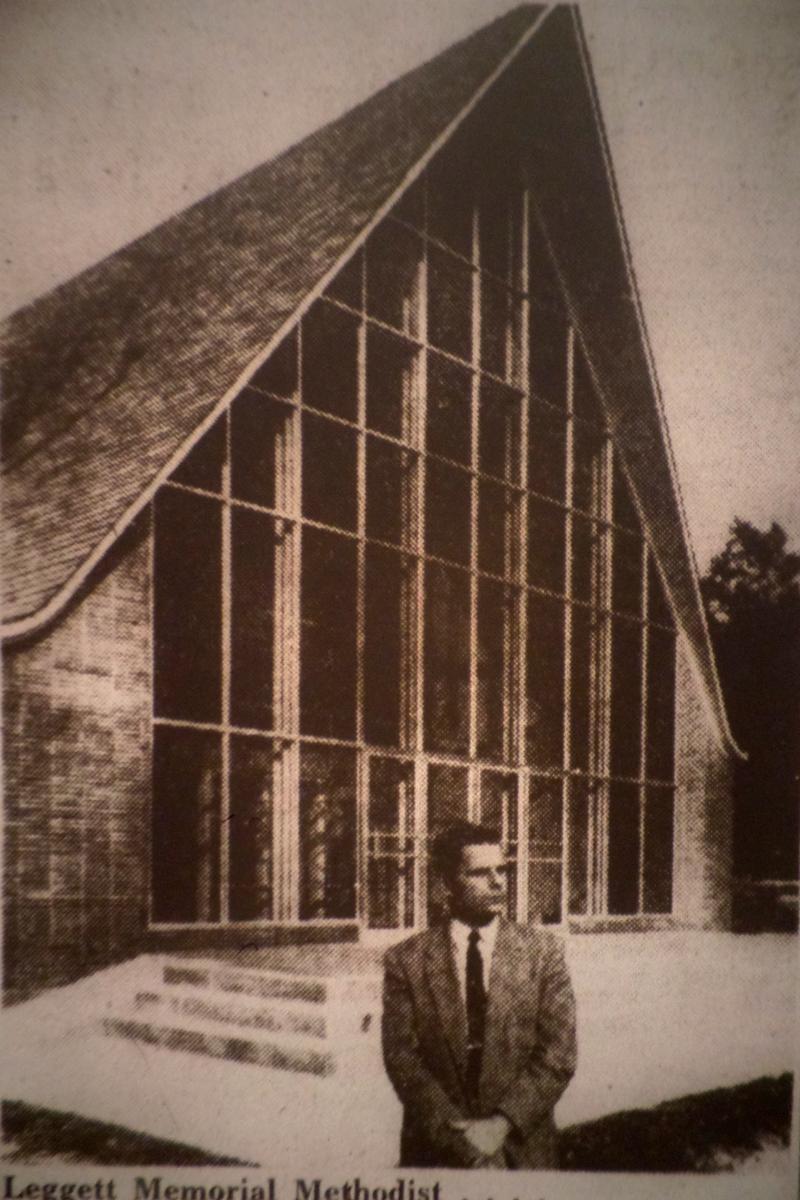
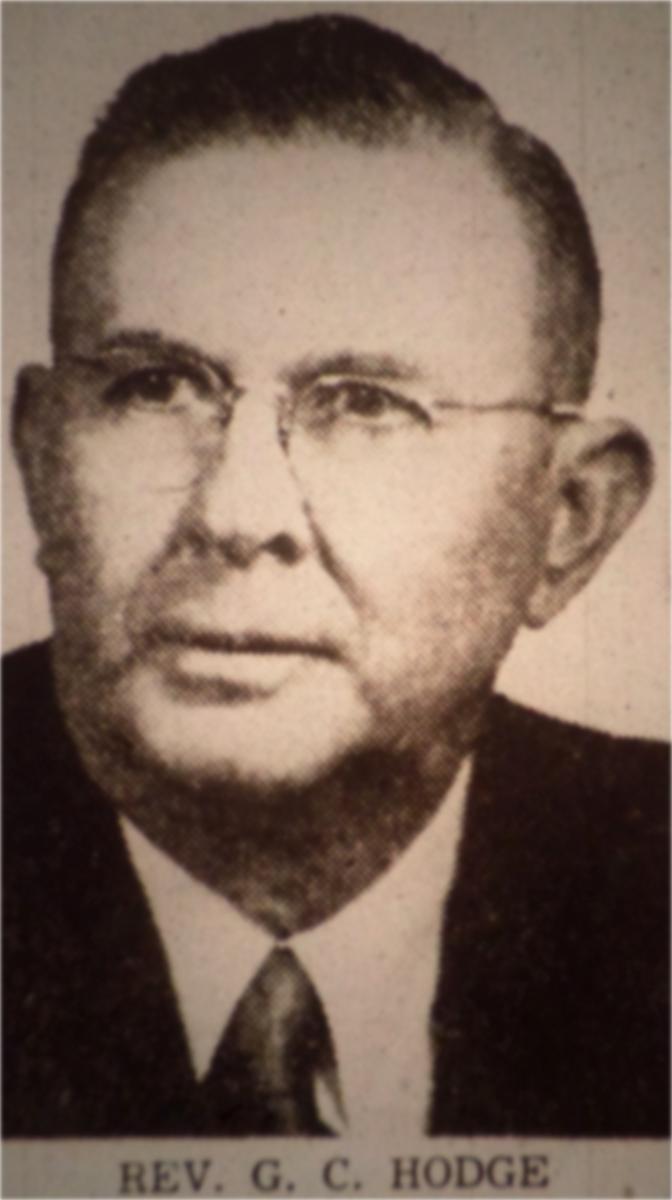
.jpg)
